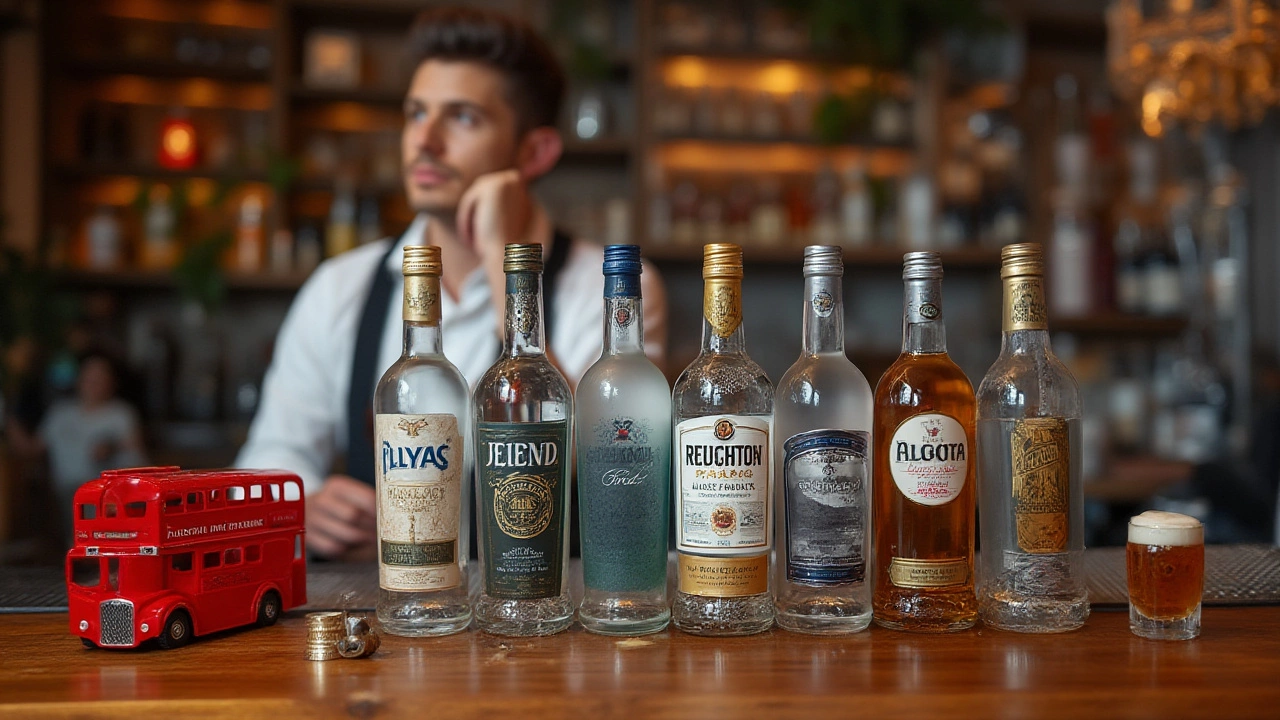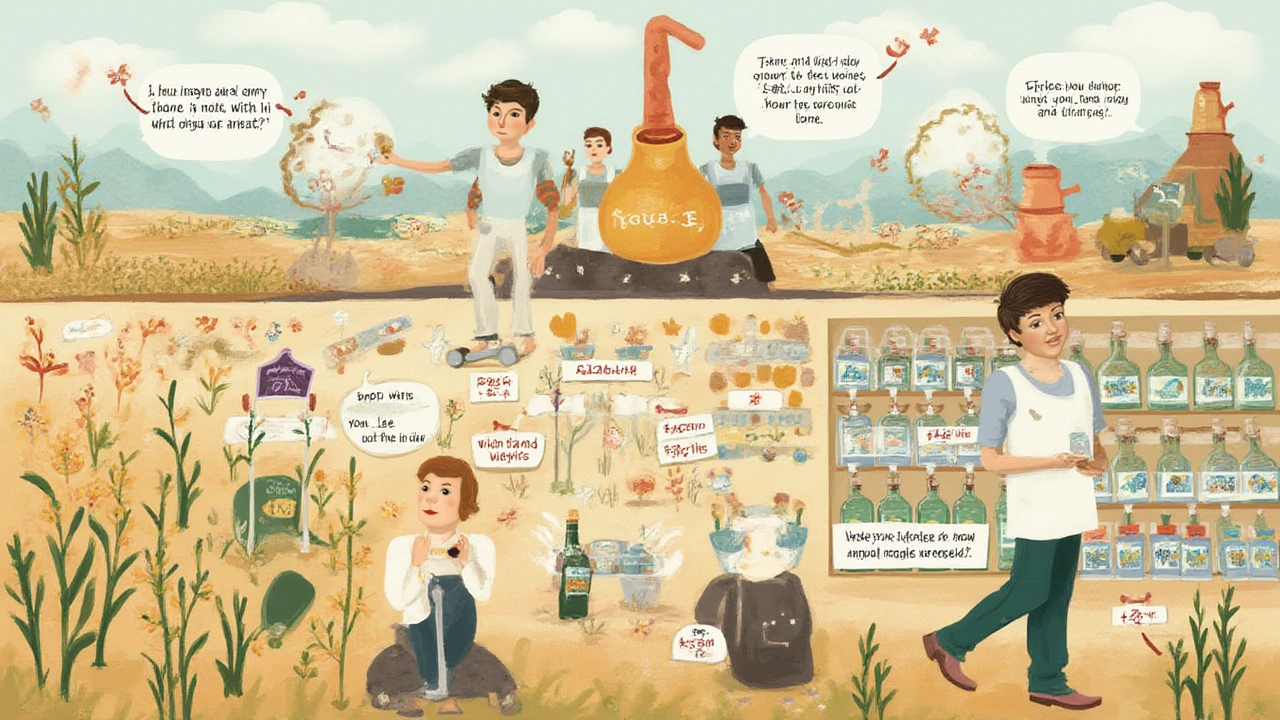You ever stand in a liquor aisle and wonder if grabbing the cheaper vodka means you’re in for a terrible night? Maybe you’ve seen those frosted glass bottles with elegant fonts and almost fainted at the price tag. But here’s the thing—vodka is supposed to be ‘neutral.’ So, does paying more buy you anything but cool packaging? Let’s crack open the truth and settle the score between cheap vodka and its pricier cousin, once and for all.
How Vodka Is Made: What’s Behind the Price?
When most people think of vodka, they picture an icy clear liquid with next to no smell or flavor. But the road from wheat field or potato patch to that sleek bottle is a lot more complex than most assume. It all kicks off with raw ingredients—wheat, rye, potato, corn, and sometimes even grapes if the distiller is feeling fancy. These sugars get eaten by yeast, giving off alcohol through fermentation. Afterward comes distillation, which is where cheap and expensive vodkas often part ways.
The number of times vodka gets distilled is a big deal. Some budget brands call it quits after two or three runs through the still. That can leave behind tiny chemical leftovers (known as congeners—think of them as hangover’s evil little helpers) and subtle flavors from the base material. The premium brands will shout about being “five times distilled” or even “seven times filtered.” This isn’t always a marketing gimmick; more filtering usually means fewer off-notes and a smoother sip. But here’s a twist: after about three or four distillations, most connoisseurs agree you hit diminishing returns. If it’s done right, anything after that is a bonus, not a necessity.
Then, there’s filtration. It can be as simple as running the vodka through activated charcoal, or as extra as using diamond dust or backwoods birch wood. Each method claims to zap impurities. Most scientific taste panels agree charcoal gets the job done best if you want that crisp, near-flavorless feel. Boutique brands might use quirky filtration to carve out a unique flavor profile. If you like a vodka that actually tastes like something, those niche bottles could be your thing. But that’s a taste call, not necessarily a quality measure.
Now, think about water. Seems boring, but it’s the secret weapon for many top vodkas. Some brands swear by spring water from Lithuania, others import glacier melt from Iceland. Why the fuss? The minerals in water can actually make vodka feel silkier or rounder on the palate. The bottom-shelf guys? They’ll use whatever’s cheapest, maybe just a municipal tap. If you’re mixing it, who cares? But if you want to sip straight, water does matter a bit.
And then, the government must step in. Both cheap and high-end vodkas have to meet strict purity standards across the U.S. and Europe. Unless someone’s bootlegging in their bathtub, even the $8 jug won’t poison you. Still, the steps in quality control—like batch testing, advanced filtration, tasting panels—do cost money, and that gets added to the sticker price.
The eye candy is another price driver. Expensive vodkas flaunt frosted glass, metallic etching, or crystal closures. That all adds to the price. If you pour the same liquid into a plain bottle, it would be a lot cheaper—but good luck getting anyone to buy it for $50. Packaging is marketing, and marketing works.
So does country of origin boost the price? Sometimes. Russian and Polish vodkas have legendary status, supposedly hand-crafted by babushkas on snow-capped peaks. Realistically, those producers often do use special wheat or centuries-old recipes, but sometimes the biggest difference is just geography and the story on the bottle. If that story matters to you, it might justify the splurge.
At the end of the day, making vodka isn’t rocket science, but making it really clean and smooth is harder than it looks. More distillations, better filters, rare spring water, pretty packaging, and even old family tales—these all add up.

Does Expensive Vodka Taste Better? Let’s Test It
Here’s where it gets sticky. Vodka is hyped as tasteless, but if you’ve ever done a side-by-side with cheap and expensive brands, you know that’s not quite true. Consumer Reports and several famous bar publications have run blind taste tests comparing budget and premium vodkas. Want to hear something wild? Some cheap vodkas scored just as high, or sometimes higher, than bottles costing five times more.
So what separates the taste? With cheap vodka, you may pick up on a telltale ‘burn’—that hot, sharp leftover you feel after you swallow. That isn’t just alcohol doing its job; it’s usually because cheap brands leave in more impurities. These combine to deliver that harsh finish and sometimes a faint whiff of glue or rubbing alcohol. Not everyone cares, especially if you’re drowning it in orange juice. But if you try a neat sip, it’s obvious.
Premium vodkas, on the other hand, should glide down smoothly—no burning, no harshness, maybe even a lightly creamy or mineral texture. Some, like Belvedere or Chopin, carry a slightly sweet or peppery note, reminding you they were crafted from real rye or potatoes. French vodkas like Grey Goose may taste a touch bready. None of this should punch you in the face, though. If all you want is smooth, that’s where spending extra makes a difference.
It’s kind of a myth that all expensive vodkas are flavorless. Some aim for total neutrality, while others want to stand out just enough to be interesting. People who grew up drinking neat vodka (hello, Eastern Europe) often appreciate a spirit with just a whisper of flavor—earthy, bready, or even floral. There’s actually a science to this: vodka is measured for its “organoleptic profile,” which just means taste, mouthfeel, and finish. High marks mean clean, smooth, soft. Low marks mean hot, harsh, or chemical.
Here’s a tip: if you want to test the difference yourself, pour three samples—one cheap, one midrange, one premium. Chill them all equally, as vodka is always served cold in serious taste-offs (ice dulls rough flavors). Sip slowly, let it hit the tip of your tongue, and pay attention to the finish. Even people who claim they can’t taste vodka will usually spot the outlier.
If you’re just making cocktails, that burn gets hidden under mixers and ice. So don’t waste your best stuff on screwdrivers. But if you like Martinis, where vodka is front and center, try using a mid-to-premium bottle. You’ll notice your drink feels more “silky,” rather than raw and abrasive.
Interestingly, a famous study out of Russia in 2017 looked at hangover severity after drinking different qualities of vodka. They found that poorly filtered vodka did, in fact, lead to nastier hangovers, thanks to higher ‘congener’ levels. So if you’ve ever wondered why a night of cheap shots ruined you, science has your answer.
Remember that packaging and name drop value? Some vodkas get trendy because celebrities endorse them. Not to point fingers, but Dan Aykroyd’s Crystal Head comes in a skull-shaped bottle and gets snapped up for looks alone. It’s a good vodka, but the showy bottle matters more than what’s inside for many buyers.
One more expert hack: sniff before you sip. Good vodka has almost no odor, or just a faint grainy sweetness. If you smell harsh acetone or alcohol, brace yourself for a rough ride.

Is Price Worth It? How to Choose Vodka for Any Occasion
Price and quality in vodka don’t always march in lockstep. But if smoothness and clean flavor are big deals for you—like if you sip vodka chilled on its own or love classic Martinis—the bump up to something midrange or premium is usually worth it. Think Absolut, Stolichnaya, Ketel One, or even Tito’s as safe upper-mid picks. You don’t need to splash out for eye-watering prices unless you truly want that fancy bottle for the back bar.
If you’re hosting a party and the plan is cocktails, your dollar goes further if you stick with a solid, mid-priced brand. Smirnoff or Svedka work great for mixing, and most people can’t tell the difference once other flavors are involved. The cheapest, bottom-shelf stuff is a gamble—sometimes harsh, occasionally fine, but rarely memorable. If you mix with bold flavors like cranberry or pineapple, you can definitely get away with less expensive vodka with no complaints.
Ever seen those “Vodka Hack” videos where someone runs cheap vodka through a Brita filter? There’s a reason for that. Filtering strips out impurities and can make even rough spirits taste smoother. It’s not magic, but if you’re pinching pennies, this trick definitely takes the edge off a budget bottle.
One detail that surprises people: vodka doesn’t age. There are no “reserves” or vintage years like whisky or wine. Once it’s bottled, that’s it. And if you open it, it won’t improve, but it also won’t spoil fast as long as you keep it sealed and out of sunlight. So spending on extra-aged vodka is just a marketing spin—don’t let anyone convince you otherwise.
Look for government quality seals if you’re buying overseas. Russia, Poland, and Ukraine take vodka standards seriously. A government seal means strict controls—think of it as a built-in third-party review.
For the calorie counters, vodka is one of the leaner spirits—about 97 calories per 1.5 oz shot of 80-proof vodka. No matter the price, sugar isn’t usually added (unless you’re grabbing a flavored version). So both cheap and expensive vodkas will have about the same calories and alcohol content.
If you want that Mad Men vibe and only sip vodka on the rocks, treat yourself to something a notch above bar basics. Your taste buds (and your head the next morning) will probably thank you. But don’t buy into the idea that a $100 vodka is ten times better than a $10. Unless you’re collecting bottles or care a lot about looks, midrange is usually the sweet spot for both quality and value.
Some vodka brands sneakily distill or bottle in Eastern Europe but sell under foreign names. French-sounding name? Double check the label. If origin stories or tradition mean a lot to you, pay attention to where and how the vodka is actually made.
Ever tried flavored vodkas? The price difference here is less about base spirit quality and more about the flavorings. If you want to avoid fake, syrupy tastes, pony up a few extra bucks for brands with real fruit infusions. Otherwise, you’re just drinking vodka with chemical flavoring—fun, maybe, but definitely not artisanal.
So, next time you’re stuck between a $12 handle and a $45 designer bottle, ask yourself these honest questions: Am I sipping this straight? Am I mixing it up at a party? Does that bottle look amazing on my shelf? Are hangovers a real risk? Honest answers always land you the best value. The difference between cheap vodka and expensive vodka isn’t just about the money. It’s in the taste, the finish, the story—and, let’s be honest, sometimes just in the style points at your next house party.


